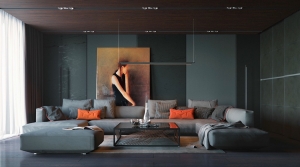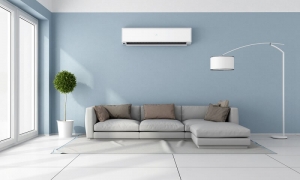The furniture in a home shapes the way people feel and function daily. Beyond aesthetics, furniture influences mental well-being, physical health, and overall comfort. Thoughtfully selected pieces promote relaxation, encourage good posture, and create an environment that nurtures both the body and mind. A well-furnished space can improve sleep quality, reduce stress, and increase productivity, making it a key factor in creating a balanced and fulfilling lifestyle.
Investing in luxury furniture takes these benefits to the next level. High-end materials, superior craftsmanship, and ergonomic design ensure unparalleled comfort, durability, and timeless appeal. From handcrafted wooden dining tables to premium leather recliners, luxury furniture is designed not only to elevate aesthetics but also to enhance well-being. The use of high-quality upholstery, soft fabrics, and sophisticated finishes provides a sensory experience that contributes to relaxation and emotional satisfaction.
Every detail in a well-designed space matter, from furniture arrangement to material selection. A carefully curated interior with luxury furniture offers more than just visual appeal. It fosters a serene, organized, and inspiring atmosphere where comfort and style come together effortlessly. Ali Guler Furniture embodies this philosophy by creating elegant and functional pieces that transform homes into havens of relaxation and refinement. Understanding how furniture affects well-being allows homeowners to make informed choices that prioritize both mental and physical health while indulging in superior comfort and elegance.
The Impact of Furniture on Mental Well-Being
A Home That Promotes Relaxation
A peaceful home starts with the right furniture. Soft, comfortable seating, well-organized spaces, and calming colors contribute to a stress-free environment. Cluttered rooms with poor layouts can increase anxiety, while open, airy spaces provide a sense of calm. The way furniture is arranged can encourage relaxation and mental clarity, making it easier to unwind at the end of the day. Incorporating natural elements like wooden furniture, indoor plants, and soft lighting further enhances the soothing atmosphere, making a home feel like a true retreat from daily stress.
The Role of Personalization
Furniture is deeply personal. A favorite chair, a well-loved table, or a customized workspace can bring comfort and emotional stability. People feel more connected to their environment when their furniture reflects their personality and lifestyle. Whether through color choices, fabric selection, or unique designs, personalizing furniture helps create a home that feels safe and welcoming. This emotional connection fosters a sense of belonging, reinforcing the idea that home is a sanctuary tailored to individual needs.
Reducing Stress Through Organization
Clutter is known to increase stress levels, making organization an essential part of furniture selection. Storage solutions such as shelving units, cabinets, and multi-functional furniture keep spaces tidy and reduce mental overload. A well-organized home with designated spaces for belongings creates a sense of control and order, improving focus and peace of mind. Incorporating hidden storage solutions within furniture, such as beds with built-in drawers or coffee tables with compartments, allows for a minimalist and uncluttered look while maintaining functionality.
The Influence of Sensory Experience
Furniture engages the senses beyond just sight—it influences how a home feels through texture, temperature, and even sound absorption. Soft, plush fabrics invite relaxation, while smooth surfaces like polished wood or marble create a sense of sophistication. Even the acoustics of a space can be altered by furniture, with cushioned pieces reducing echo and creating a more intimate, calming ambiance.
The Psychological Benefits of Stability and Structure
Furniture provides a sense of stability, both physically and psychologically. Solid, well-crafted pieces evoke feelings of security, while a thoughtfully arranged home establishes predictability and routine. When furniture is placed in a way that promotes ease of movement and harmony, it enhances the sense of order and contributes to mental well-being by reducing subconscious stress.
How Furniture Arrangement Affects Mood and Productivity

Maximizing Natural Light
Positioning furniture to allow natural light into a room improves mood and energy levels. Sunlight boosts serotonin production, reducing stress and promoting happiness. Placing seating areas near windows, using light-reflecting furniture, and avoiding bulky items that block light help brighten a space and create a more uplifting atmosphere. Incorporating mirrors or glass furniture can further enhance light distribution, making even smaller rooms feel more open and vibrant.
Creating Designated Zones
Every home needs areas for different activities. A well-arranged home includes spaces for relaxation, work, dining, and socializing. Thoughtfully placed furniture helps define these zones, making daily activities more structured and efficient. A dedicated workspace with an ergonomic chair and desk enhances productivity, while a cozy reading corner with a comfortable chair promotes relaxation. Strategically using rugs, shelving, or partitions can subtly separate different zones without making a space feel cluttered or closed off.
The Psychology of Space
The layout of furniture influences movement, comfort, and overall mood. Well-spaced furniture allows for easy navigation, while crowded areas can feel overwhelming. Open layouts with clear pathways create a sense of freedom, while strategic placements can make a home feel more intimate and cozy. Even the placement of furniture at certain angles can encourage social interaction, relaxation, or focused work, shaping the way people engage with a space.
Enhancing Social Interaction with Seating Arrangements
Furniture placement can encourage or hinder social interaction. Arranging sofas and chairs to face each other fosters conversation, while seating aligned with entertainment centers or walls can create a more passive environment. Opting for flexible seating solutions, such as modular sofas or movable chairs, allows a space to adapt to different social settings, making gatherings more dynamic and engaging.
Decluttering for a Clear Mind
A cluttered environment can lead to a cluttered mind, affecting focus and emotional well-being. Thoughtfully arranged furniture should support organization, making it easy to keep surfaces clean and areas free from unnecessary items. Incorporating furniture with built-in storage, such as ottomans with hidden compartments or wall-mounted desks, helps maintain a tidy and distraction-free environment.
The Role of High-Quality Materials in a Safe and Comfortable Home

Ergonomic Design for Better Posture
Ergonomic furniture provides proper support for the body, reducing strain on muscles and joints. Poorly designed chairs, desks, and sofas contribute to back pain and poor posture, leading to long-term health issues. Investing in well-structured seating and adjustable furniture promotes spinal alignment, preventing discomfort and physical fatigue. Properly positioned armrests, lumbar support cushions, and height-adjustable desks further enhance ergonomic benefits, ensuring long-term well-being.
Non-Toxic and Sustainable Materials
Furniture materials impact air quality and overall health. Non-toxic, low-VOC (volatile organic compound) materials minimize exposure to harmful chemicals found in synthetic furniture. Sustainable materials like solid wood, organic fabrics, and natural finishes create a healthier home environment while reducing environmental impact. Choosing responsibly sourced materials not only benefits personal health but also supports environmental conservation, making ethical consumption a key factor in furniture selection.
Comfort Through Textures and Fabrics
The way furniture feels affects relaxation and well-being. Soft fabrics like velvet or linen create a sense of warmth, while sturdy materials like wood and metal offer stability. A balance of textures enhances sensory comfort, making a home more inviting. Selecting high-quality upholstery, supportive cushions, and breathable fabrics improves the overall experience of living spaces. Layering different materials, such as plush rugs with leather furniture or woven throws with sleek wooden tables, adds dimension and enhances the coziness of a home.
Durability and Long-Term Investment
High-quality furniture is an investment in both comfort and longevity. Well-crafted pieces made from durable materials like solid hardwood, reinforced steel, or premium leather last longer and maintain their structure over time. Unlike mass-produced alternatives that wear out quickly, investing in superior craftsmanship reduces the need for frequent replacements, ultimately saving money and reducing waste.
Temperature Regulation and Breathability
The materials used in furniture affect temperature control within a home. Natural fibers like cotton and wool help regulate body temperature, making furniture comfortable year-round, while materials like leather or synthetic upholstery can trap heat. Opting for furniture that breathes well, such as linen-covered seating or slatted wood bed frames, enhances comfort and ensures better air circulation.
The Connection Between Furniture and Physical Health
Encouraging Movement and Reducing Sedentary Lifestyles
Modern lifestyles often involve long hours of sitting, which can negatively impact physical health. Adjustable desks, standing workstations, and flexible seating encourage movement, helping prevent stiffness and circulation issues. Incorporating active furniture solutions, such as balance chairs or reclining chairs, supports better posture and muscle engagement. Even small adjustments, like footrests or ergonomic stools, can promote micro-movements that improve circulation and reduce the risk of long-term health issues.
Sleep Quality and Bedroom Furniture
The quality of sleep directly affects physical and mental health. A supportive mattress, breathable bedding, and a well-ventilated bed frame create an environment that promotes restful sleep. Properly positioned nightstands, blackout curtains, and noise-absorbing furniture also contribute to better sleep hygiene. Choosing natural materials like organic cotton sheets and wooden bed frames further enhances sleep quality by reducing allergens and chemical exposure.
Reducing Physical Strain
Furniture that lacks proper support can lead to muscle tension and chronic discomfort. Investing in high-quality chairs with lumbar support, desks at the correct height, and cushioned seating prevents unnecessary strain. Well-designed furniture distributes body weight evenly, reducing pressure points and enhancing daily comfort. Incorporating footrests, armrests, and headrests into furniture design further supports the body, promoting relaxation and preventing fatigue.
Enhancing Posture with Proper Desk and Chair Alignment
Poor posture is a leading cause of back pain and musculoskeletal issues, often exacerbated by ill-fitting furniture. Chairs with adjustable height, tilt functions, and lumbar support help maintain a natural spinal curve, while desks at the right height prevent neck strain. Positioning monitors at eye level and using wrist supports for keyboards can further prevent strain, making workspaces more ergonomic and health-conscious.
The Role of Supportive Flooring and Seating Surfaces
The type of flooring and seating surfaces in a home also affects physical well-being. Hard surfaces can cause discomfort and joint pain when standing for long periods, while overly soft or sagging seats contribute to poor spinal alignment. Using anti-fatigue mats in high-traffic areas and opting for firm yet comfortable cushions ensures better weight distribution and reduces unnecessary strain on the body.
The Psychological Effects of Color, Texture, and Aesthetics
|
Aspect |
Effects on Well-Being |
|
Color Psychology |
Soft blues and greens promote calmness, warm tones add energy, and neutral colors provide balance and versatility. |
|
Texture and Comfort |
Mixing plush, smooth, and natural textures adds depth, prevents monotony, and enhances sensory appeal. |
|
Design and Mental Harmony |
A cohesive design with uncluttered surfaces and balanced decor reduces subconscious stress and fosters relaxation. |
|
Lighting and Mood |
Soft, warm lighting enhances relaxation, while bright, cool lighting boosts focus and productivity. |
|
Shapes and Forms |
Curved designs create comfort and flow, while sharp angles convey structure and formality. |
|
Material Selection |
Natural materials like wood and organic fabrics improve air quality and create a healthier living environment. |
|
Furniture Arrangement |
Well-spaced furniture enhances movement, comfort, and ease of navigation, reducing stress. |
|
Personalization |
Custom furniture choices reflect personality, creating a sense of connection and emotional stability. |
The Power of Color Psychology
Colors influence mood and emotions. Soft blues and greens create a calming effect, while warm tones like reds and yellows add energy to a space. Neutral colors offer balance and versatility, making them ideal for long-term comfort. Choosing furniture in soothing tones enhances relaxation and mental clarity. Even subtle color accents, like pastel throw pillows or wooden accents, can shift the ambiance of a room, creating a more inviting and harmonious atmosphere.
The Role of Texture in Comfort
A mix of textures adds depth and interest to a home. Plush cushions, natural wood surfaces, and smooth leather seating create a well-rounded sensory experience. Tactile variety in furniture prevents monotony, making a space feel more inviting and comfortable. Layering different materials, such as combining soft rugs with sleek glass or pairing linen upholstery with metal frames, enhances both visual and sensory appeal.
Balancing Design for Mental Harmony
A well-designed home feels cohesive and intentional. Mismatched or chaotic arrangements can create subconscious stress, while a harmonized space encourages relaxation. Choosing furniture that complements the overall aesthetic of a home fosters a sense of peace and order. A minimalist approach with clean lines and uncluttered surfaces further reinforces tranquility, while personalized décor elements add warmth and character.
The Impact of Lighting on Mood and Perception
Lighting is just as crucial as furniture when shaping a room's emotional impact. Soft, warm lighting promotes relaxation, while bright, cool lighting enhances focus and productivity. Layering different light sources—such as overhead fixtures, floor lamps, and accent lighting—creates a balanced atmosphere, allowing for flexibility in mood and function.
The Psychological Influence of Shapes and Forms
The shapes of furniture pieces can subtly influence perception and emotions. Rounded edges and curved designs evoke a sense of comfort and flow, while sharp angles and rigid lines can create a more structured and formal atmosphere. Opting for a combination of both soft and structured forms helps maintain a balance between relaxation and sophistication, ensuring that the space remains inviting and purposeful.
The Importance of Multi-Functional and Adaptable Furniture

Space Optimization for a Stress-Free Home
Efficient furniture choices maximize space and reduce clutter. Storage ottomans, foldable tables, and modular seating offer flexibility without overcrowding a room. Smart furniture solutions ensure a home remains functional and organized. In smaller homes or apartments, wall-mounted desks and Murphy beds provide extra space when not in use, making every square foot count without compromising comfort.
Versatility in Living Spaces
Multi-functional furniture allows for adaptability in different settings. Convertible sofas, expandable dining tables, and stackable chairs make it easy to transition between activities. This flexibility enhances convenience and ensures a home remains practical over time. A well-designed space with adaptable furniture can serve multiple purposes, from a home office by day to an entertainment area by night, maximizing efficiency without sacrificing style.
Blending Style with Practicality
A well-furnished home should be both beautiful and functional. Selecting timeless pieces that align with personal taste ensures long-term satisfaction. Thoughtful furniture choices contribute to an enjoyable and stress-free living environment. Investing in quality multi-functional furniture means that every item serves a purpose while maintaining an elegant and cohesive look that complements the home's design.
Smart Technology Integration in Furniture
Modern furniture is increasingly designed to integrate with smart home technology, enhancing convenience and functionality. Beds with built-in lighting, coffee tables with wireless charging pads, and sofas with USB ports are just a few innovations that merge furniture with technology. These smart additions not only improve daily living but also contribute to an organized and clutter-free environment by reducing the need for extra gadgets and wires.
Adaptability for Changing Needs
As lifestyles evolve, so do furniture requirements. Modular furniture systems, height-adjustable tables, and expandable storage solutions accommodate changing family dynamics, remote work needs, or shifting design preferences. This adaptability ensures that a home remains comfortable and efficient, no matter how personal circumstances change over time.
Designing a Home for Comfort and Well-Being
The way a home is furnished influences both mental and physical well-being. Thoughtfully selected pieces create a peaceful atmosphere, promote better posture, and encourage movement, all of which contribute to a healthier lifestyle. Well-organized spaces reduce stress, ergonomic furniture enhances comfort, and high-quality materials improve air quality and durability.
By prioritizing functionality, comfort, and aesthetics, it's possible to shape a home that fosters relaxation, happiness, and overall well-being, making everyday living more enjoyable and fulfilling.






